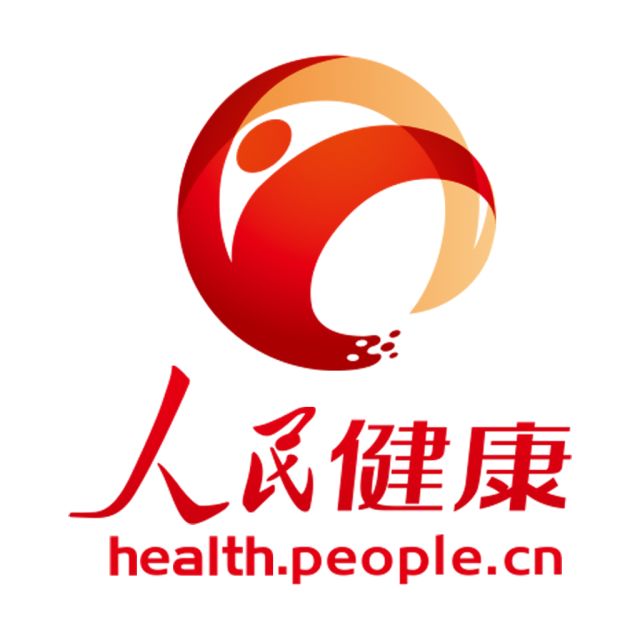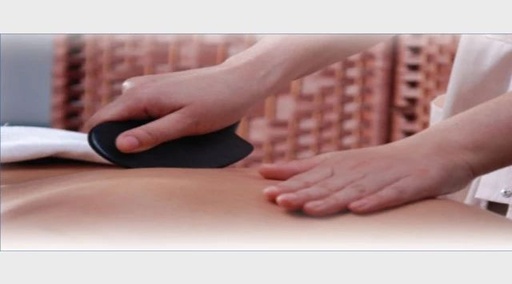
People’s Health
Everything for the Health of the People
Everything for the Happiness of the People
Follow

As the weather gets warmer, many people will practice Gua Sha to dispel heat. On the afternoon of July 8, movie star Chen Xuedong shared a photo of his Gua Sha session on Weibo, showing deep red marks on his back, captioned: “Those with a fear of tight spaces should not enter; the power of Gua Sha is instant!”
Dr. Ni Feng, Deputy Chief Physician of the Medical Health Center at Zhongshan Hospital in Zhejiang Province, commented that using excessive force during Gua Sha is not advisable, and that redness alone is not a good indicator of effectiveness.
In response to Chen Xuedong’s remark about “instant marks,” Dr. Ni explained that the speed of mark formation is not a measure of therapeutic effect but rather relates to skin sensitivity. Some individuals may not show visible marks after Gua Sha, yet their capillaries may have already ruptured.
Dr. Ni stated that the primary function of Gua Sha is to invigorate blood circulation and resolve blood stasis, promoting the recovery of the body’s immune function. It can be effective for conditions such as heat stroke, stiff neck, and colds due to wind and cold, and it has gained popularity among young people for alleviating neck and shoulder pain.
Previously, a photo of Ah Jiao’s “blood-red back” after Gua Sha sparked heated discussions. Experts generally commented that this was excessive scraping, leading to skin bleeding, which can damage the skin barrier and potentially cause localized redness and infection.
Excessive force during Gua Sha can lead to skin damage, and caution is especially advised for the elderly and children. “Gua Sha causes a large amount of metabolic waste to be released into the interstitial fluid, which is then excreted through the kidneys. If done excessively, especially in individuals with pre-existing weak kidney function, it can lead to kidney damage,” Dr. Ni warned.
This time, a reporter from Qianjiang observed Dr. Ni’s Gua Sha process for educational purposes. Each area was treated in three stages: using a jade stone, scraping from top to bottom and from inside to outside, starting with gentle strokes for five times until slight redness appears, followed by ten stronger strokes, and if the skin tolerates it, an additional five strokes.
Dr. Ni does not oppose practicing Gua Sha at home for preventing heat stroke or dispelling dampness, as it indeed has benefits, but emphasizes the importance of moderation and gradual progression. So, what else should be noted? He listed the following:
•
People unsuitable for Gua Sha include those who are physically weak or fatigued, have poor constitution, chronic diseases, leukemia, diabetes, liver and kidney dysfunction, severe cardiovascular and cerebrovascular diseases, pregnant women, those on their menstrual cycle, and individuals with skin lesions.
•
During Gua Sha, avoid using air conditioning or electric fans. Do not consume cold drinks before and after the session. After Gua Sha, it is recommended to drink warm water, and if possible, take a short nap. If you need to shower, wait at least half an hour.
•
Choose Gua Sha tools that are of moderate thickness with blunt and smooth edges, such as jade stones, cow horn combs, or ceramic spoons. Use lubricants like massage oil or olive oil; petroleum jelly is also a good choice, but avoid using safflower oil.
•
Be cautious with your technique. If symptoms like dizziness, nausea, or cold sweats occur, stop immediately and lie down. If symptoms do not improve, seek medical attention. Generally, Gua Sha should be repeated only after 5 to 7 days.
How should we perform Gua Sha in daily life?
Yang Jinsheng, a researcher and chief physician at the China Academy of Chinese Medical Sciences, advises holding the scraping tool at a 45-degree angle or less to the skin for comfort, avoiding scraping in a scooping motion. Scrape in the direction of blood circulation, without going back and forth. It is advisable to scrape 3 to 5 areas for 3 to 5 minutes each, not exceeding half an hour.
Different levels of pressure yield different effects: light pressure is for “tonifying,” while strong pressure is for “draining.” Most people are unaware of whether their constitution is deficient or excess, so it is best to maintain an even pressure, known as “balanced tonification and draining.” Wait 3 to 5 days after the first session before performing Gua Sha again.
Once you master the technique, where should you scrape for specific ailments?

Fatigue: Bai Hui (百会) + Tai Yang (太阳)
Bai Hui (百会): Located at the intersection of the midline of the head and the line connecting the tips of the ears.
Tai Yang (太阳): Located in front of the ear, above the outer corner of the eye, on both sides of the forehead.
Method: There are three methods for Gua Sha on the head. First, comb the hair from the front hairline to the back; Mao Zedong used this method, claiming it wakes up the mind in the morning. Second, scrape from the center of the head outward in all directions, relaxing the entire head around Bai Hui. Third, scrape from the center of the head forward and backward, and scrape the sides at Tai Yang. This promotes blood circulation in the head, enhances alertness, and improves memory.
Tip: Scrape or massage lightly when there is no discomfort.

Neck and Shoulder Pain: Feng Chi (风池) + Jian Jing (肩井)
Feng Chi (风池): Located on both sides of the large tendon at the back of the head, parallel to the earlobes; the two depressions at the back of the head when the head is lowered.
Jian Jing (肩井): Located at the midpoint of the line connecting the Dazhui (大椎) and the acromion, at the highest point of the shoulder.
Method: Scrape Feng Chi from top to bottom along the skin until reaching Jian Jing, then scrape along the shoulder from inside to outside, scraping thirty times on fleshy areas and twenty times on bony areas.
Tip: Adjust the angle with your wrist, moving the forearm to guide the scraping tool.

Cough and Wheezing: Tian Tu (天突) + Dan Zhong (膻中)
Tian Tu (天突): Located at the midline of the neck, in the central depression of the sternum.
Dan Zhong (膻中): Located in the center of the chest between the two nipples.
Method: Scrape along the midline from top to bottom. You can also scrape along the intercostal spaces, using the edge of the tool from inside to outside, generally scraping ten to twenty times until the chest is slightly reddened.
Tip: Avoid scraping the nipple area and any unexplained lumps in the breast.

Poor Digestion: Zhong Wan (中脘) + Tian Shu (天枢)
Zhong Wan (中脘): Located in the upper abdomen, on the midline, four finger widths above the navel. Tian Shu (天枢): Located two finger widths to the side of the navel.
Method: Scrape the abdominal muscles from top to bottom, as blood vessels also flow in this direction. Some people scrape from the inside out for weight loss, but this only loosens the flesh; abdominal scraping should also be from top to bottom.
Tip: For poor bowel function, scrape below the navel; some women may also scrape the lower abdomen for menstrual pain.

Blood Nourishment and Liver Support: Xue Hai (血海) + San Yin Jiao (三阴交)
Xue Hai (血海): While kneeling, cover the kneecap with the palm of your hand, fingers pointing up, with the thumb at the fleshiest part below the kneecap.
San Yin Jiao (三阴交): Located on the inner side of the lower leg, four finger widths above the ankle joint.
Method: Scrape from Xue Hai to San Yin Jiao in one continuous motion from top to bottom, without pausing in between, until the skin turns red and purple bruises form. Regular scraping of San Yin Jiao can help nourish blood and support the liver.
Tip: For lower limb Gua Sha, start by scraping the outer side from top to bottom, then the back (the bladder meridian area), and finally the inner side.
After Gua Sha, you may not be familiar with what to do next and the environmental considerations. Sun Jianhua, Director of the Acupuncture Department at Jiangsu Provincial Hospital of Traditional Chinese Medicine, recommends that after Gua Sha at home, drink a cup of warm water, preferably with a little salt or sugar. The body loses some fluids during Gua Sha, and drinking salt or sugar water can help replenish fluids and accelerate metabolism, promoting the elimination of waste from the body, thereby enhancing the effects of Gua Sha. Director Sun also reminds that avoid taking a cold shower within 30 minutes after Gua Sha.
(Source: People’s Health Network)


